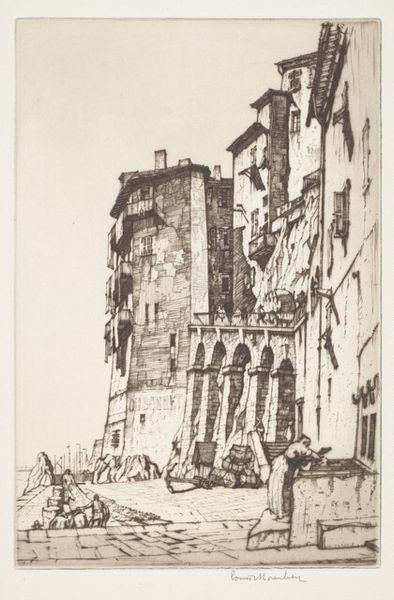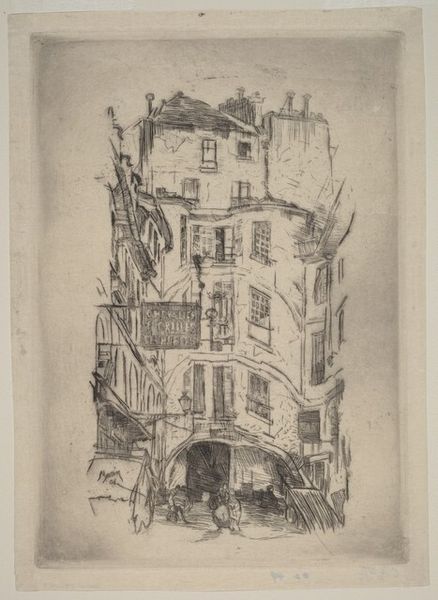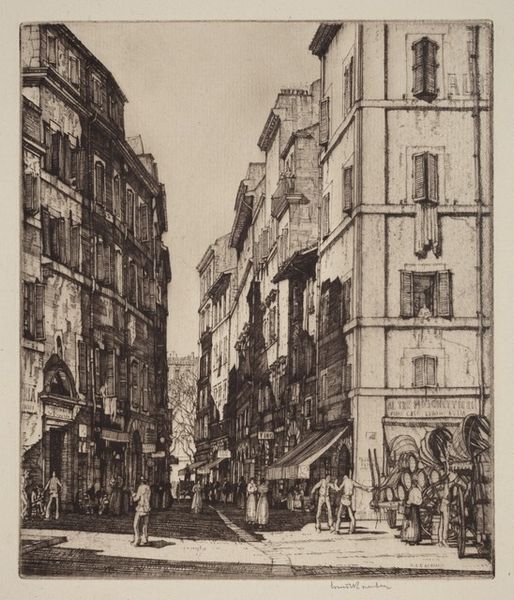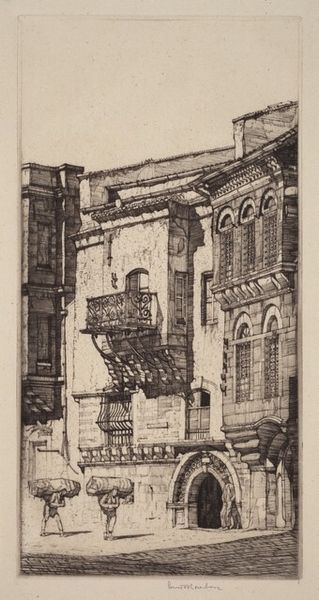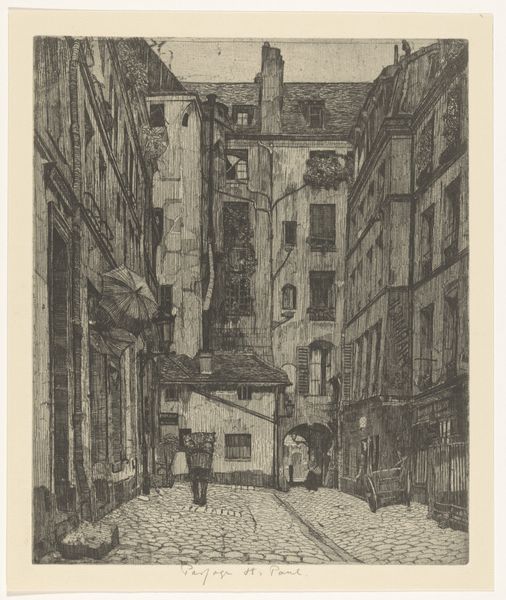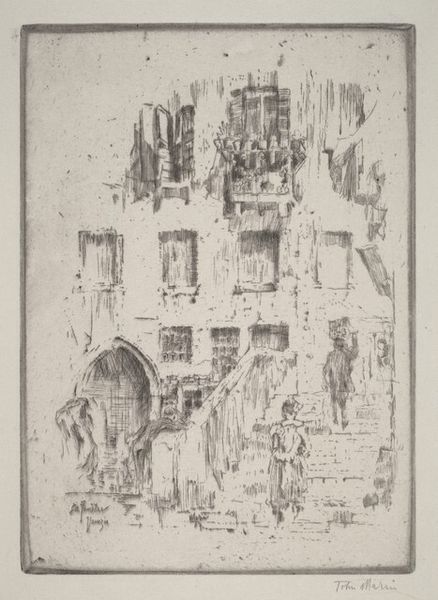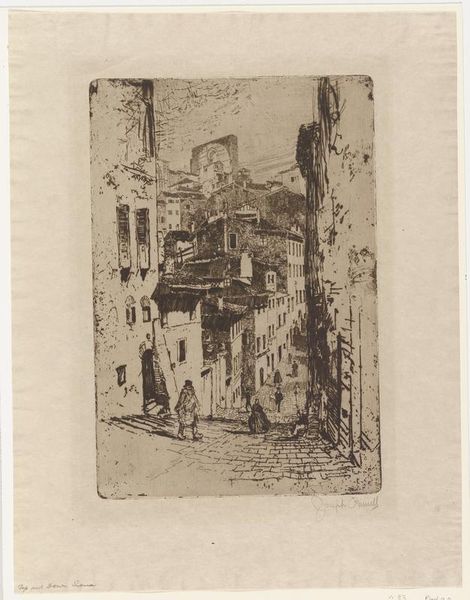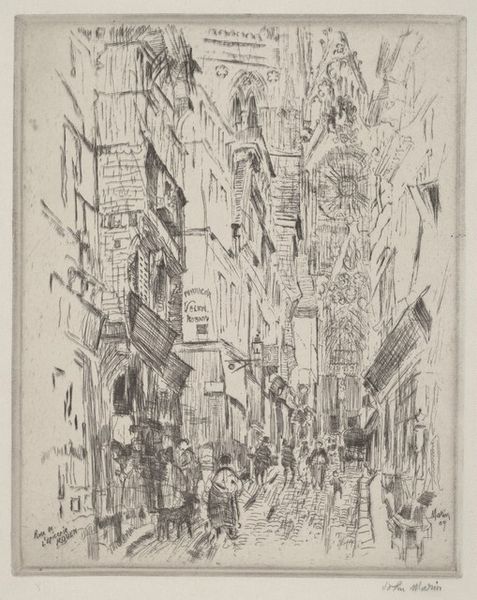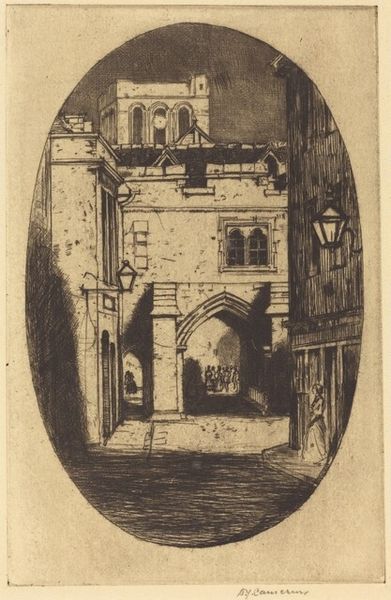
print, etching
# print
#
etching
#
cityscape
#
realism
Copyright: National Gallery of Art: CC0 1.0
Curator: Louis Conrad Rosenberg created "Drying Nets, Villefranche" in 1929. It's an etching depicting a vibrant scene in the south of France. Editor: The crisscrossing lines of the etching give it such a busy feel; a real sense of bustle and maybe a little bit of poverty, all cramped together under this archway. What's immediately apparent to me is the interplay between the shadowed architecture and that central, illuminated arch. Curator: Precisely. The image calls upon certain visual codes and motifs of early-20th-century labor. These figures in the foreground evoke themes of social class, highlighting the often unseen work of the working class. The location of Villefranche itself, being a port city, invites analysis of the role of labor within coastal communities and how social hierarchies operated within them. Editor: What resonates for me, culturally speaking, is the almost hidden procession of figures within the archway, perhaps priests or monks, rendered with an otherworldly quality compared to the earthbound figures struggling in the foreground. It pulls us into a complex historical relationship. Note also the archway itself, echoing classical forms, symbolizing a threshold. But toward what? Curator: The formal realism, though, softens that social commentary. The artist's meticulous capture of light and shadow mitigates any overt political messaging. Rosenberg uses visual tension to create a microcosm of life in this city, making it less a didactic pronouncement on labor relations, and more an exercise in aesthetic representation of a particular milieu. We cannot help but note that Rosenberg produced a body of similar etchings—an entire series of related images. This points to how, across even diverse locales, there were comparable themes of early modern urban life and the struggles it created. Editor: That’s true, the setting takes center stage. But that foreground of manual labor also evokes centuries-old iconographic representations of peasantry. The fishing nets themselves carry generations of symbolic association. Are they emblems of provision, prosperity, community… or the snare of inescapable poverty and daily toils? The ambiguity itself feels emotionally very telling. Curator: A fitting conclusion to this tour. It’s this kind of multi-layered experience that reminds us how to contextualize such pieces historically and sociologically. Editor: Agreed. It offers a compelling window into Rosenberg's mastery of form and how even seemingly simple imagery holds lasting power.
Comments
No comments
Be the first to comment and join the conversation on the ultimate creative platform.
